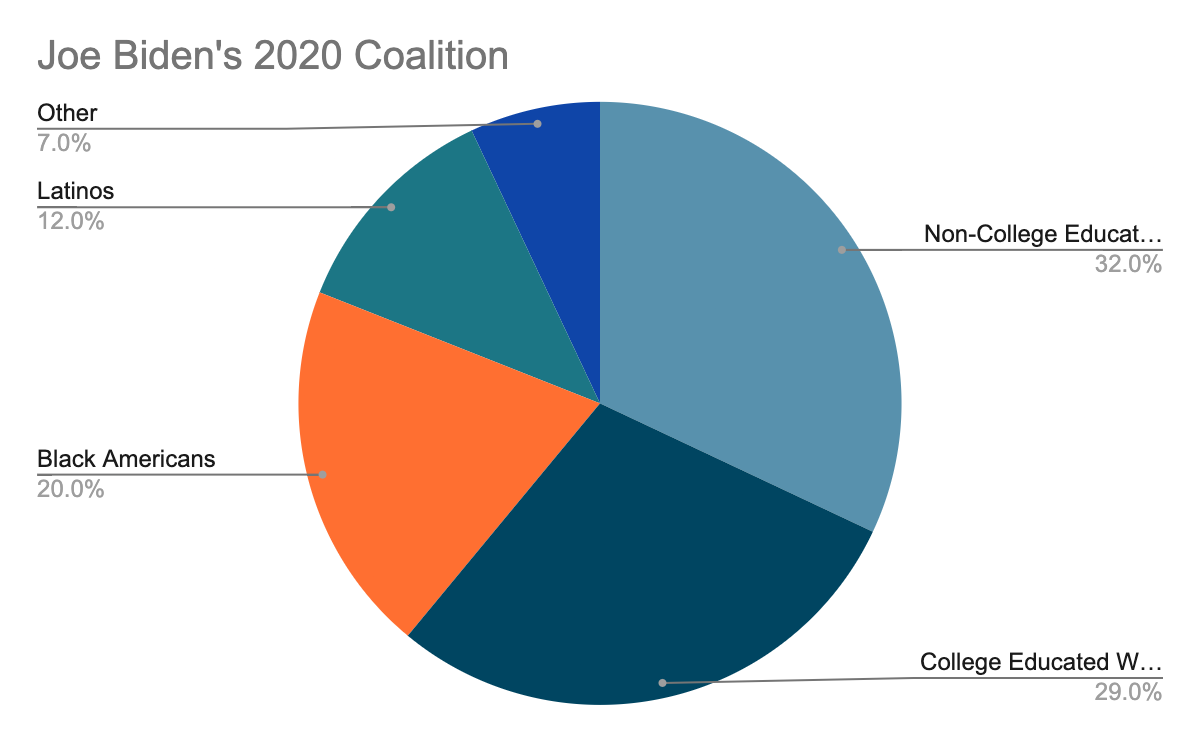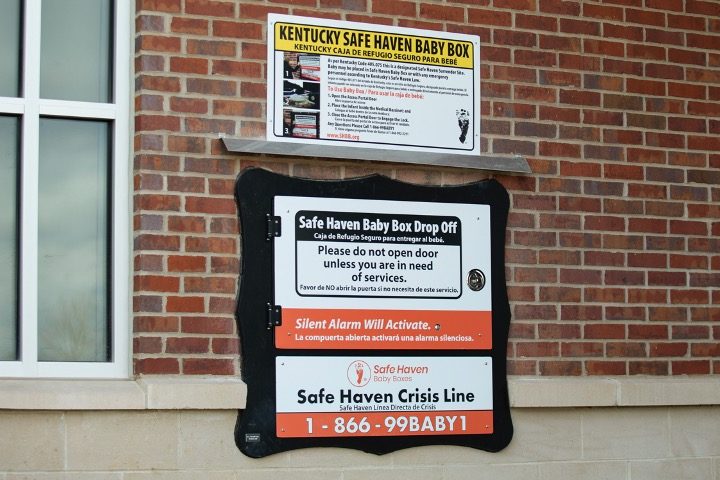The upcoming presidential election is more than a year away, yet the excitement over the Republican primary, the chances that President Joe Biden could drop out before Election Day, or the curiosity of a third-party candidate swinging the likely rematch between former President Donald Trump and his successor has already piqued the interest of politicos.
Many Trump supporters believe that the mojo and excitement he enjoyed from the 2016 campaign is back, but that this time he’s surrounded himself with a more polished team of professionals. Yet the country has changed significantly from eight years ago when the unlikely future president stepped from his golden escalator. The overturning of Roe v. Wade, demographic changes, increased suburbanization, and a reapportionment of the Electoral College have significantly changed the landscape. So here’s what the American voter will probably look like in 2024 and how it will affect the election.
Demographics
Over the last fifty years, America has undergone the most significant demographic changes of any country in recent history. Mass immigration, the progressive politics of Generation Z, and the dying off of older Americans have changed the fabric of America.
The Center for American Progress, AEI, and the Brookings Institution produced a study in 2016 that examined political trends over the last decade, factoring in demographic changes; they came to the conclusion that 2024 could be the last chance that a Republican could win the White House for the foreseeable future. Of course, that’s not written in stone: In the 2020 election, Trump managed to close the gap with Hispanic voters, and, in subsequent elections in 2021 and 2022, Asian voters also drifted towards the GOP. Furthermore, in 1992, the white vote actually increased as an overall share of the electorate, and, in 2016, it diminished far less than experts expected.
The only way for Republicans to manage to win the popular vote at this point is to surpass Mitt Romney’s level of support with white voters (60 percent) by 10 points or by reaching over 40 percent of Hispanic and Asian votes. Both are a tall order.
Still, with millions of Gen Z voters turning 18 and older generations dying off, chances are likely that this prediction will be realized.
That doesn’t mean that Republicans are doomed for eternity. Presidential elections are decided by the Electoral College, which favors the GOP, and third-party candidates tend to siphon votes from core constituencies of the Democratic Party, namely young voters.
Current demographics projections on the upcoming election vary depending on the source. Based on post-election analysis from Catalist and Pew Research, the makeup will look something like this:
- 41 percent non-college educated white
- 29 percent college educated white
- 12 percent black
- 11 percent Hispanic
- 5 percent Asian
- 2 percent other
If you go by exit polls from the 2020 and 2016 and early polling from the New York Times, it will look like:
- 40 percent non-college educated white
- 26 percent college educated white
- 13 percent Hispanic
- 10 percent black
- 5 percent Asian
- 4 percent other
White Americans’ share of the electorate is expected to decline about two percentage points in the next election while blacks’ share will remain stagnant or decline by a half-point, while Asians and Hispanics will grow by about a point each.
That could change by a significant margin depending on the enthusiasm or lack thereof from the party’s base. In 1992, the number of non-college educated white Americans who turned out to vote for Ross Perot exceeded expectations and made the electorate whiter. The candidacy of the first black president turned out an unprecedented number of black voters in 2008 and 2012. The pendulum swung against Democrats in 2016 due to a depressed black turnout for Hillary Clinton, which allowed Trump to win key battleground states like Pennsylvania, Michigan, and Wisconsin.
This election will likely be the last where Millennials and Gen Z (“Zoomers”) will not make up a majority of potential voters. According to Census data, 48.5 percent of all potential voters will come from those two generations. Given that they vote at a lower frequency than older generations, it’s likely that they will make up about 40 percent of all voters, while around 60 percent will be Gen Xers, Baby Boomers, and members of the Silent Generation.
Persuadable Democrats
Unless there is a large drop-off of Democratic voters, in the same way that Hillary Clinton couldn’t motivate black Americans to turn out, a Republican candidate is going to have to try to win support from Biden voters.
Despite the mainstream narrative that Biden voters are mostly an alliance of black Americans and college-educated women with purple hair, Catalist finds that the biggest part of Joe Biden’s coalition in 2020 was non-college educated white Americans—an estimated 25 million votes came out of this demographic.
This upcoming election will be the first one where non–college educated white Americans will not be the largest group in the Democratic presidential candidates’ coalition. As they continue to shrink as an overall percentage of the population, they’ll likely be replaced with college-educated whites.
That doesn’t mean they will be insignificant. Non–college educated whites will still make up more than one in four Americans who are casting a ballot for Joe Biden. Nor does it mean that Republicans shouldn’t look at siphoning off more of their votes from the Democrats.
David Byler, a former data analyst for the Washington Post, wrote in late June that a large cross section of these working-class Biden voters support conservative policies. According to Byler’s analysis, 32 percent support banning abortion after the twentieth week of pregnancy, 40 percent support increasing the number of police officers even if it means cutting other public services, and 20 percent support building a $25 billion wall on the southern border.
Any significant shift by those voters will be more instrumental in closing the gap of 7 million voters in the last election.
Yet early polls, especially from the New York Times/Siena, find that if anything, they’re becoming more entrenched with the Democratic president, and the group shifting to the right are non-white, non-college educated men.
If Biden were to lose 5 percent of his overall support of Hispanics and Asians support, it would cost the Democrats over 750,000 votes. If he loses 5 percent with the non-college educated white voters, it means that Democrats would shed almost 1.3 million votes.
The Normie American
Is there a “normie voter,” one that speaks to people outside the parameters of extreme partisanship? It’s something political consultants are questioning. A large part of the reason Republicans had a disappointing election result during the midterms was that abortion, denying the legitimacy of the 2020 election, and an overall weirdness factor cost Republicans in both statewide races and suburban congressional districts.
This doesn’t mean voters are smitten with Biden and progressive politics. In fact, a recent CNN poll found that 54 percent of Americans have more trust in congressional Republicans to solve issues while only 45 percent of Americans said they put their faith in President Joe Biden. Nonetheless, election denialism and abortion were two of the biggest wedge issues that drove persuadable voters away from the GOP in the same way that critical race theory and defunding the police helped elevate Republicans in 2021.
The only reason Republicans were able to win the national popular vote in 2022 was because they had higher voter turnout than Democrats and lower propensity independents.
Going into the presidential election, a large chunk of those voters aren’t enthusiastic about voting for Joe Biden or Donald Trump. According to the New York Times/Siena poll, Biden and Trump have an unfavorable rating of 54 and 55 percent, respectively. Furthermore, 14 percent of voters in that same poll aren’t enthusiastic about supporting either candidate in the general election. This includes:
- 31 percent of voters who did not vote in the 2020 election
- 11 percent of people who voted for Biden in 2020
- 7 percent of people who voted for Trump in 2020
- 21 percent of independents
- 16 percent of suburban voters
- 14 percent of Midwestern voters
- 21 percent of Hispanic voters
- 11 percent of non-college educated white Americans
It’s more than likely that these voters fall into what I call “normie voters”: people who aren’t hyper-partisan and whose politics don’t neatly fall into being either liberal or conservative.
A study from the University of California at Berkeley from 2014 found that “moderate” voters, which have a large overlap with “normies,” aren’t necessarily centrists.
When asked about their positions on a range of thirteen divisive issues, “moderate voters” held non-centrist positions almost all the time, from being very right-wing on issues like immigration, unions, and healthcare to being left-wing on subjects like Social Security, Medicare, and contraception. The idea that “moderates” look like Joe Manchin or Susan Collins is mistaken.
The pollster J.L. Partners conducted a word map of the most important issues Americans are concerned with going into the 2024 election:
Subscribe Today
Get weekly emails in your inbox
It’s a lot of what people would expect with words like “inflation,” “economy,” immigration,” “crime,” “healthcare,” and “gun violence” popping out.
The candidate who can best convey solutions to these issues while coming across as competent and relatable can win the next presidential election—so long as they don’t get lost in partisan minutiae or stuck catering to small portions of his base at the expense of normie Americans.
Shop For Night Vision | See more…
Shop For Survival Gear | See more…
-
Sale!

Quick Slow Release Paramedic Survival Emergency Tourniquet Buckle
Original price was: $14.99.$7.99Current price is: $7.99. Add to cart -
Sale!

Mesh Shooting Hunting Vest with Multi Pockets
Original price was: $59.99.$39.99Current price is: $39.99. Add to cart -
Sale!

Portable Mini Water Filter Straw Survival Water Purifier
Original price was: $29.99.$14.99Current price is: $14.99. Add to cart


















































